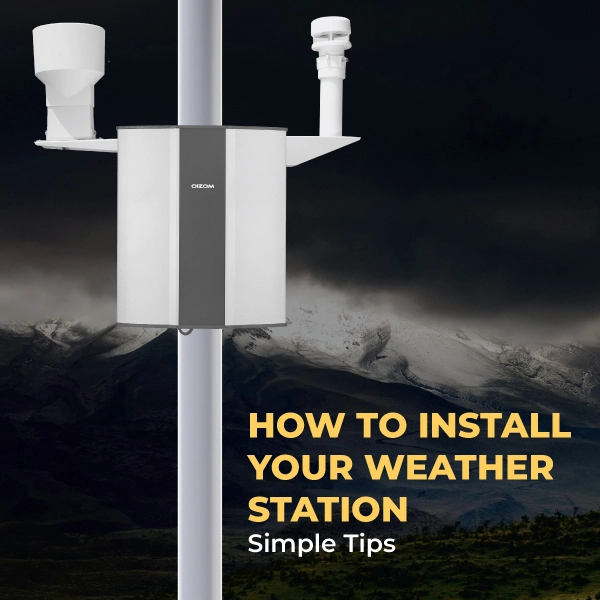Air pollution is an issue which all of us experience every day. The menace of air pollution has increased to the extent that 9 out of 10 people in the world are breathing polluted air, according to a study conducted by the World Health Organization (WHO). Such sickening air is killing millions of people every year by numerous diseases caused by air pollution.
At this scale, it is not just a matter of great concern from a public health perspective. The risks and damages increased due to air pollution are also creating a huge economic burden and losses.
With increasing awareness of the impacts of air pollution, the demand for cleaner air is increasing dramatically around the globe. However, the continuous deterioration of air quality is showing us that our current approaches to reduce air pollution are clearly not producing desired results. We need to change the way we tackle air pollution to be able to effectively reduce it. Air pollution sensors are central to that paradigm shift in air pollution management.
Oizom provides solutions to one of the most challenging aspects of tackling air pollution which is accurately measuring the concentration of air pollutants in the air. Sensor-based air quality monitors such as Oizom’s PolludroneTM not only change the way we measure air pollution; it changes the way we manage it.
Real-Time Monitoring Provides Live and Up-to-Date State of Air Quality
Air quality is a very dynamic property, it can change very quickly. Real-time air quality monitoring captures even the smallest fluctuations in air quality. By spotting sudden changes in air quality, it aids in investigating its cause and in following up with action. Traditional air pollution measuring devices are not capable of providing pollution concentrations at such a finer time scale. As a result, they cannot take into account the pollution variability taking place in the region and simply provide a snapshot of averaged pollution concentration.
With sensor-based air quality monitoring, a better insight into pollution variability can be developed. This improved understanding of the pollution problem enables us to make informed decisions. It strengthens our mitigation measures with accurate real-time data, leading to effective pollution reduction.
High Spatial Resolution Providing a Clear Picture of Air Pollution
The distribution of air pollution in a given area can be highly irregular and non-uniform. If an air quality monitor is placed at only one point, it is only able to provide information on the air quality of that particular point in space. Sensor-based air quality monitors, due to their design and economical cost can be placed at more than one location. Data points from multiple locations provide a full and representative picture of air quality in the area.
The increasing spatial resolution adds up the capability of identifying patterns of pollution distribution in the area. It leads to a better understanding of pollution sources and the identification of pollution hotspots. Sensor-based air quality monitors also have the capacity to cover an area for hyperlocal monitoring providing unprecedented pollution concentration details at exposure level. It plays an important role in improving public awareness by encouraging community-level actions and helping people customize their behaviors to reduce their pollution exposure.
With such detailed information about the sources of pollution, its distribution and variation with time provide a holistic picture of the pollution problem of the location. This understanding provides the basis for the effective pollution reduction measures unique to that area.
Quick Data Analytics and Visualisation
Analysis and visualization of data are crucial to making sense of measured values of air pollution concentration. Various statistical analyses such as trend analysis provide us with context and help us develop an understanding of the state of air quality and how it is changing.
Plotting data on graphs and maps provides an even better understanding of the measured data. It helps us clearly visualize trends, hotspots, and times with the highest pollution concentrations. It is critical to have the capability to carry out such analyses and visualization to convert data into action.
All the Oizom’s devices continuously send accurately measured air quality data to a central server. It can be instantaneously analyzed and visualized on Oizom Data Terminal. Reducing this time gap in measuring the data and analyzing it significantly improves the measures employed to reduce pollution.
Data to Action with Smart Automation
One of the most important features of sensor-based air quality monitors is their ability to integrate with other systems for environmental automation. Air pollution sensors can be easily integrated to a diverse range of systems to carry out various automatic functions.
Automation based on data collected by air pollution sensors optimizes the operation of the automated system. Processes can be made more effective and energy-efficient with such data-driven automation. The crucial reaction time saved between collecting the data and carrying out a particular task immensely reduces the pollution level at greater efficiency.
All the Oizom devices are designed to easily integrate with automation systems. Oizom’s DustroidTM was deployed to an industrial facility with high loads of particulate matter (PM). It was integrated with the air purifiers installed in the facility to automate its operation. A significant reduction in the PM concentration was recorded due to the timely activation of air purifiers at the facility. It also saved a lot of operational costs by optimizing the run time and purification intensity.
Supports Smart Cities Mission by Empowering Authorities Through Informed Decision Making
The primary aim of smart cities is to create a better living space with a strategic approach towards environmental sustainability leading to citizen well-being and economic development. The flexible framework of sensor-based monitors supports the development of evidence-based and data-driven environmental management policies. Integration friendly cross-platform applications bring together multiple stakeholders by developing efficient and productive partnerships.
Environmental data can be supported and easily augmented with other datasets such as demographics, epidemiological data, and economic indicators leading to informed and effective formulations of policies.
Oizom offers comprehensive and scalable solutions for real-time environmental monitoring and analytics. Our solutions strive to provide an insightful understanding of the total environment for its responsible management.






